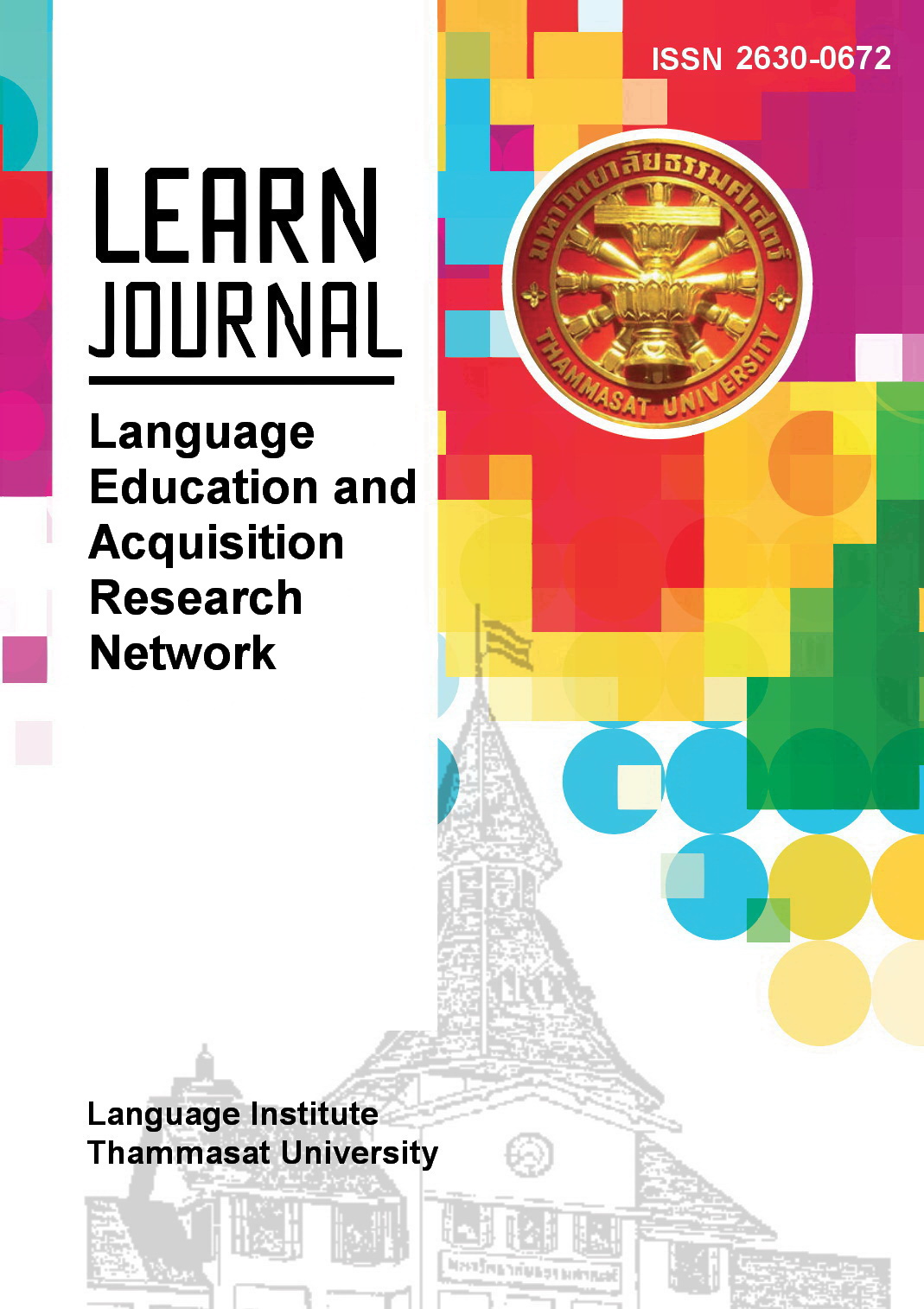Ten Tricky Questions about Narrative Inquiry in Language Teaching and Learning Research: And What the Answers Mean for Qualitative and Quantitative Research
Main Article Content
Abstract
This article addresses ten ‘tricky’ questions related to narrative inquiry in the field of language teaching and learning research. The questions come from the author’s experiences of presenting lectures and seminars on narrative inquiry in many different contexts. The questions deal with issues to do specifically with narrative inquiry methods as well as with broader issues related to narrative research approaches. Where applicable, reference is made to the implications the answers have for both qualitative and quantitative research. The article starts with a brief overview of what narrative inquiry is in the context of language teaching and learning research.
Article Details
References
Ahn, S-Y. (2021). Visualizing the interplay of fear and desire in English
Learner's imagined identities and communities. System, 102, 102598.
Atkinson, D. (2021). The adaptive expertise of expert ELT textbook
writers. RELC Journal, 52(3), 603-617.
Awayed-Bishara, M. (2021). Linguistic citizenship in the EFL classroom:
Granting the local a voice through English, TESOL Quarterly, 55(3), 743-765.
Barkhuizen, G. (2011). Narrative knowledging in TESOL. TESOL Quarterly,
(3), 391-414.
Barkhuizen, G. (2013). Introduction: Narrative research in applied
linguistics. In G. Barkhuizen (Ed.), Narrative research in applied linguistics (pp. 1-16). Cambridge University Press.
Barkhuizen, G. (2014). Revisiting narrative frames: An instrument for
investigating language teaching and learning. System, 47, 12-27.
Barkhuizen, G. (2016). A short story approach to analyzing teacher
(imagined) identities over time. TESOL Quarterly, 50(3), 655-683.
Barkhuizen, G. (Ed.) (2019). Qualitative research topics in language
teacher education. Routledge.
Barkhuizen, G. (2020a). Telling stories about narrative inquiry methods in
applied linguistics research. https://www.youtube.com/watch?v=HOKFkk23iiM&t=2135s
Barkhuizen, G. (2020b). Narrative inquiry in applied linguistics: Work in
progress. https://www.youtube.com/watch?v=Uai0g0yd3SM&t=567s
Barkhuizen, G., & Consoli, S. (2021). Pushing the edge in narrative inquiry.
System, 102, 102656.
Barkhuizen, G., & Wette, R. (2008). Narrative frames for investigating the
experiences of language teachers. System, 36(3), 372-387.
Bell, J. (2002). Narrative inquiry: More than just telling stories. TESOL Quarterly, 36(2), 207-213.
Benson, P. (2018). Narrative analysis. In A. Phakiti, P. De Costa, L. Plonsky,
& S. Starfield (Eds.), The Palgrave handbook of applied linguistics research methodology (pp. 595-613). Palgrave Macmillan.
Benson, P. (2021). Space in narrative inquiry on second language
learning. System, 102, 102602.
Bruner, J. (1986). Actual minds, possible worlds. Harvard University Press.
Chase, S. E. (2003). Taking narrative seriously: Consequences for method and theory in interview studies. In Y. Lincoln & N. Denzin (Eds.), Turning points in qualitative research: Tying knots in a handkerchief (pp. 273-296). Altimira Press.
Clandinin, D. J., & Connelly, F.M. (2000). Narrative inquiry: Experience and
story in qualitative research. Jossey-Bass.
Connelly, F. M., & Clandinin, D. J. (2006). Narrative inquiry. In J. L. Green,
G. Camilli & P.B. Elmore (Eds.), Complementary methods for
research in education (pp. 477-487). Lawrence Erlbaum.
De Fina, A., & Georgakopoulou, A. (2012). Analyzing narrative: Discourse
and sociolinguistic perspectives. Cambridge University Press.
Dovchin```, S., & Dryden, S. (2022). Translingual discrimination: Skilled
transnational migrants in the labour market of Australia. Applied Linguistics, 43(2), 365-388.
Fenstermacher, G. D. (1997). On narrative. Teaching and Teacher
Education, 13(1), 119-124.
Golombek, P. R., & Johnson, K.E. (2021). Recurrent restorying through
language teacher narrative inquiry. System, 102, 102601.
Greenier, V., & Moodie, I. (2021). Photo-narrative frames: Using visuals
with narrative research in applied linguistics, System, 102, 102597.
Ishihara, N., & Menard-Warwick, J. (2018). In ‘sociocultural in-
betweenness’: Exploring teachers’ translingual identity development through narratives. Multilingua, 37(3), 255-274.
Josselson, R. (2007). The ethical attitude in narrative research: Principles
and practicalities. In D.J. Clandinin (Ed.), Handbook of narrative inquiry: Mapping a methodology (pp. 537-566). Sage.
Kramp, M. K. (2004) Exploring life and experience through narrative
inquiry. In K. de Marrais & S.D. Lapan (Eds.), Foundations for research: Methods of inquiry in education and the social sciences (pp. 103-121). Lawrence Erlbaum.
Mertova, P., & Webster, L. (2020). Using narrative as a research method
(2nd ed.). Routledge.
Ochs, E., & Capps, L. (2001). Living narrative: Creating lives in everyday
storytelling. Harvard University Press.
Pavlenko, A. (2007). Autobiographic narratives as data in applied
linguistics. Applied Linguistics, 28(2), 163-188.
Polkinghorne, D. E. (1995). Narrative configuration in qualitative analysis.
Qualitative Studies in Education, 8(1), 5-23.
Prior, M. T. (2016). Emotion and discourse in L2 narrative research.
Multilingual Matters.
Riessman, C. K. (2008). Narrative methods for the human sciences. Sage.
Sandelowski, M. (1991). Telling stories: Narrative approaches in
qualitative research. IMAGE: Journal of Nursing Scholarship, 23(3), 161-166.
Teng, L. S., Yuan, R. E., & Sun, P. P. (2020). A mixed-methods approach to
investigating motivational regulation strategies and writing proficiency in English as a foreign language contexts, System, 88, 102182.
Yip, J. W. C., Huang, J., & Teng, M. F. (2022). Identity and emotion of
university English teachers during curriculum reform in China.
Language, Culture and Curriculum. https://doi.org/10.1080/07908318.2021.2024843


